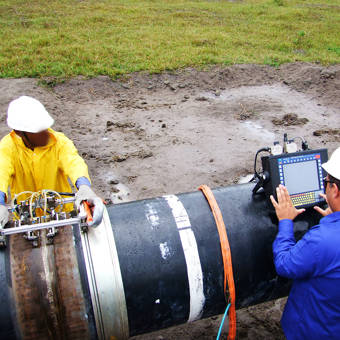Enhance Your Job: Trustworthy Pipeline Welding Inspection Professionals at Your Service
Enhance Your Job: Trustworthy Pipeline Welding Inspection Professionals at Your Service
Blog Article
Necessary Pipe Welding Evaluation Tips for Top Quality Guarantee
Exactly how can one guarantee the high quality of these welds that link the pipe areas? By understanding the important pipeline welding inspection tips, specialists can avert potential threats, reduce pricey repair services, and maintain the integrity of these important infrastructures.

Significance of Welding Examination
Welding evaluation plays a crucial duty in ensuring the architectural honesty and safety and security of pipe systems. By carefully checking out welds, inspectors can recognize any defects or imperfections that could compromise the stability of the pipe. These inspections are necessary for avoiding leakages, ruptures, and other potentially disastrous failures that might result in environmental damages, financial losses, and even death.
The importance of welding inspection can not be overemphasized, as the top quality of welds straight influences the total efficiency and durability of the pipe. Through non-destructive screening techniques such as aesthetic inspection, ultrasonic testing, radiography, and magnetic bit screening, assessors can detect defects that may not show up to the naked eye. By identifying and dealing with these concerns beforehand, welding examination helps to make sure that pipes meet market requirements and regulatory demands.
Inevitably, welding examination is an essential element of quality assurance in pipeline maintenance, construction, and repair service (Pipeline Welding Inspection). By upholding strenuous inspection standards, industry specialists can reduce dangers and promote the safety and security and dependability of pipe systems
Typical Welding Issues
Amongst the challenges faced in pipeline welding, usual defects can dramatically affect the architectural integrity and efficiency of the bonded joints. Some of the most prevalent welding flaws include lack of combination, porosity, cracks, incomplete infiltration, and misalignment. Lack of combination takes place when there is inadequate bonding between the weld metal and the base steel, causing a weakened joint. Porosity, identified by gas pockets within the weld, can reduce the stamina and make the weld vulnerable to corrosion. Splits in the weld can circulate in time, endangering the structural integrity of the pipeline. Insufficient penetration happens when the weld metal does not totally penetrate the joint, causing a weak bond. Imbalance, where the weld bead is not effectively centered, can bring about anxiety focus points and possible failure. Detecting and resolving these common issues via complete evaluation and high quality control procedures are important for ensuring the integrity and security of pipeline welds.
Evaluation Methods for Pipes


Non-destructive testing (NDT) methods such as radiographic testing, ultrasonic testing, magnetic bit testing, and liquid penetrant testing are commonly made use of in pipe welding assessment. Visual examination is likewise essential in pipe welding to identify any type of visible defects or stoppages. In addition, automatic evaluation techniques using advanced innovations like drones and robotics are progressively being employed to enhance the effectiveness and precision of pipe examinations.
Making Certain Quality Control Standards
To support stringent quality try this site assurance standards in pipeline construction, precise adherence to established industry protocols index and guidelines is vital. Quality assurance in welding processes requires a thorough method including various stages of pipe building and construction. Applying a durable high quality administration system that includes regular audits and testimonials can additionally boost the total top quality guarantee requirements in pipeline welding.
Preventing Pricey Repair Services
Given the crucial importance of keeping rigid top quality guarantee criteria in pipe building and construction, a positive approach to stopping costly fixings is essential. Regular upkeep checks and surveillance of ecological factors that could impact the honesty of the pipeline are also vital in stopping pricey repairs. By spending in preventative procedures and focusing on high quality guarantee at every stage of the pipe welding procedure, business can reduce the threat of pricey repair work and ensure the lasting integrity of their framework.
Conclusion
Finally, here are the findings adherence to proper welding assessment strategies is important for ensuring the top quality and stability of pipelines. By identifying typical welding issues and applying complete evaluation procedures, costly fixings can be avoided, and quality control standards can be fulfilled - Pipeline Welding Inspection. It is critical for pipe welders to prioritize inspection procedures to maintain the safety and reliability of the facilities they are dealing with
The significance of welding assessment can not be overstated, as the high quality of welds directly impacts the total performance and durability of the pipe. Non-destructive testing (NDT) strategies such as radiographic testing, ultrasonic screening, magnetic bit testing, and liquid penetrant testing are frequently used in pipeline welding examination. Aesthetic examination is also vital in pipeline welding to determine any kind of noticeable issues or discontinuities. Furthermore, computerized assessment methods utilizing innovative modern technologies like drones and robotics are progressively being employed to improve the effectiveness and precision of pipeline assessments.In final thought, adherence to appropriate welding inspection techniques is essential for making certain the quality and integrity of pipelines.
Report this page